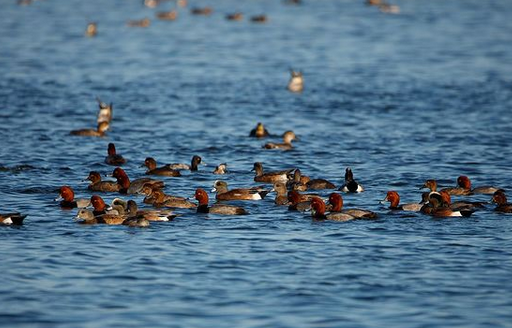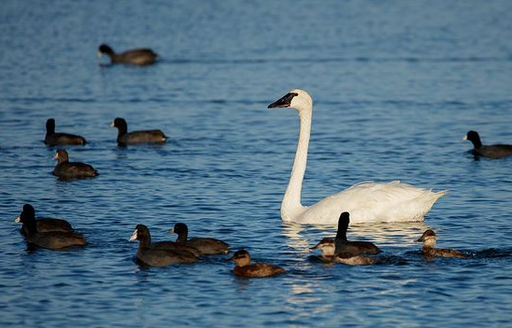This sharp looking bird is called a Redhead Duck. As their namesake implies, they are quite easily identified among large mixed flocks of waterfowl sporting that crimson plumage.
I spotted quite a few of them here at the Pea Island National Wildlife Refuge swimming in the north pond near the visitors center.

Unlike many other species of diving ducks redheads more often spotted displaying dabbling duck behavior by dipping their head underwater or tipping up to feed on plants and small invertebrates.
During the winter, they can be found in slow moving or still bodies of freshwater,
foraging on plant seeds along the shoreline such as
tubers, grass, pondweeds, wild celery, bulrushes,
water lilies, and even wild rice under the water.

Their breeding range extends from central Alaska through southern Canada to the northern regions of the United States from Washington to Maine.
Many breed in the Prairie Pothole region of the northern Great Plains of North America.
In September, these ducks migrate to winter in the warmer climates found in central Mexico, along the coast of California to the Gulf and of course the Atlantic Coast including right here in eastern North Carolina.

You can find them in most of our southeastern coastal wildlife refuges through mid April. These handsome guys are well worth the effort to find them!
Photos by @sally_siko of @birdwatching_nc on the fabulous full frame @canonusa
#5Ds







